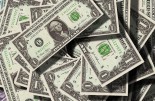Han Dieperink: The American debt paradox
Han Dieperink: The American debt paradox

This column was originally written in Dutch. This is an English translation.
By Han Dieperink, written in a personal capacity
While Trump is pushing his new tax bill, the 'One Big Beautiful Bill Act' – abbreviated to BBB – through the US Congress, credit rating agency Moody's has become the last of the three major rating agencies to strip the United States of its AAA status.
Finance Minister Scott Bessent rightly pointed out that Moody's is a “lagging indicator” in this case: Standard & Poor's had already downgraded the US in 2011, and Fitch followed suit in 2023.
Although Moody's decision does not contain any new information, it does draw attention to US budgetary policy at just the right moment – precisely when the House of Representatives has adopted Trump's BBB. Attention is therefore shifting rapidly from AAA to BBB.
The market is reacting, but the real risk is limited
The credit default swap (CDS) on US government bonds has risen, suggesting that the market is pricing in an increasing chance of a US sovereign debt default. However, the risk of an actual US default is zero – as it is for any country with its own currency (i.e. not for eurozone countries). The United States borrows exclusively in its own currency and ultimately the Federal Reserve acts as its lender.
Furthermore, the Fourteenth Amendment, Section 4 of the US Constitution explicitly states: “The validity of the public debt of the United States, authorised by law, including debts incurred for payment of pensions and bounties for services in suppressing insurrection or rebellion, shall not be questioned.” In short, the US government can never legally go bankrupt.
The figures behind the “Big Beautiful Bill”
According to the Congressional Budget Office, the current version of Trump's tax bill would cost almost $4 trillion over ten years, without coverage. This is more than originally expected. What makes it more expensive? Firstly, the uncertainty about import duties: Republicans in the House now seem more willing to accept higher uncovered expenditure to compensate for economic damage caused by tariffs. Secondly, both Trump and many members of Congress are reluctant to cut popular programmes such as Medicaid. Biden's subsidies that benefit Republican districts will not be reversed either.
The timing is problematic: the bill brings forward tax cuts and spending increases, while the revenue and spending cuts will not take effect until after 2027. This means that the BBB will contribute relatively more to the deficit in the next 2-3 years – precisely when the economy may need to cool down.
US remains a safe haven despite everything
Foreign investors are unlikely to pull out of US government bonds en masse. There is simply no other bond market that is deep and liquid enough to compete with Treasuries. US Treasuries account for half of the global government bond index, while countries with an AAA rating (including the Netherlands) represent only 10%.
The figures speak for themselves: the largest AAA bond market is Germany, with only $3 trillion in outstanding government debt, compared to $30 trillion in US government debt. Moreover, the world has a structural surplus of savings. China, the eurozone, Japan and the Gulf states together have a current account surplus of $1.4 trillion on an annual basis. By definition, these excess savings must find their way to economies with savings deficits, and the US offers the deepest and most liquid markets to absorb such a large surplus.
The real risk: a weaker dollar
The chance that the US government will be unable to repay its debt in dollars is zero, but the crucial question is what those redeemed dollars will be worth. This risk manifests itself in higher inflation in the long term, but there are also fears of a weaker dollar in the short term.
For more than ten years, others – particularly Asians – have benefited from the relatively high interest rates on US government bonds, combined with a steadily appreciating dollar via the dollar carry trade. However, the historically high valuation now makes the dollar vulnerable to a downward correction. This is reinforced by the fact that more and more parties are hedging their dollar risk. Their counterparties will want to hedge by going short on dollars – a move that could turn into a downward spiral. Moreover, Trump's aim with the import tariffs is to reduce other countries' trade surpluses with the US, with the result that those countries will have fewer dollars left to invest in the US.
Relative strength offers prospects
However, the United States is not a safe haven for nothing. Net government debt levels in the US are no worse than those of the G7 economies combined. Moreover, the US has higher long-term growth, which is helping to slow the rise in the debt-to-GDP ratio – a growth path that will receive an extra boost from artificial intelligence.
Furthermore, the US has a much lower tax burden than other developed countries, giving the US government more room to raise revenues before resorting to the printing press.
The spending structure is also not too bad. Federal tax revenues amount to 5 trillion dollars, compared to expenditures of 7 trillion dollars, resulting in a budget deficit of 2 trillion dollars. Of all dollar that are spent, approximately 1 trillion – now more than 3% of GDP – goes to interest payments, defence and non-defence discretionary spending, but 4 trillion dollars goes to social welfare programmes – spending that directly benefits American citizens.
Finally, the world thinks in dollars, via SWIFT and numerous financial contracts. It is like Microsoft's Windows operating system. You can think what you like about it, but because everyone uses it, it is not easy to switch to another system.
Procyclical policy complicates Fed policy
A core problem with current US fiscal policy is that it has become procyclical. Because of automatic stabilisers, fiscal policy normally works countercyclically: the deficit rises during a recession and cushions the economy, while in a boom, higher tax revenues and lower spending help curb inflationary pressures.
However, three new forms of unconventional policy emerged during Trump's first term. First, tax cuts at the peak of the cycle. Second, far-reaching deregulation to boost the already strong US economy. Finally, unconventional trade policy aimed at creating a level playing field for US companies.
The “One Big Beautiful Bill Act” is essentially a repeat of the tax cuts during Trump's first term. If the US government stimulates growth through fiscal measures, the Fed will have less room to cut interest rates. The market is still pricing in around 100 basis points of interest rate cuts by the end of next year. It will be difficult for US bond yields to fall significantly if these expectations are scaled back. As a result, 10-year yields in the United States will continue to move within a broad range of 4-5%.
The main risk arises if the tax bill is delayed or stalled, along with deregulation efforts, while trade conflicts persist. Markets could then follow the pattern of 2018 rather than the rally of 2017.
Conclusion: no alternative in sight
Despite all the concerns about debt and deficits, there is simply no alternative to US government bonds in the global financial architecture. The question is not whether America can pay – it always can by printing money – but at what cost to the dollar and global monetary stability.
Moody's downgrade from AAA to Aa1 is symbolically significant, but it changes little about the fundamental reality: as long as there is no other market that can match the scale and liquidity of US Treasuries, the US will remain the undisputed financial safe haven. The real risk lies not in default, but in the gradual erosion of the dollar's purchasing power – a price that will ultimately be paid by both US and international investors.








